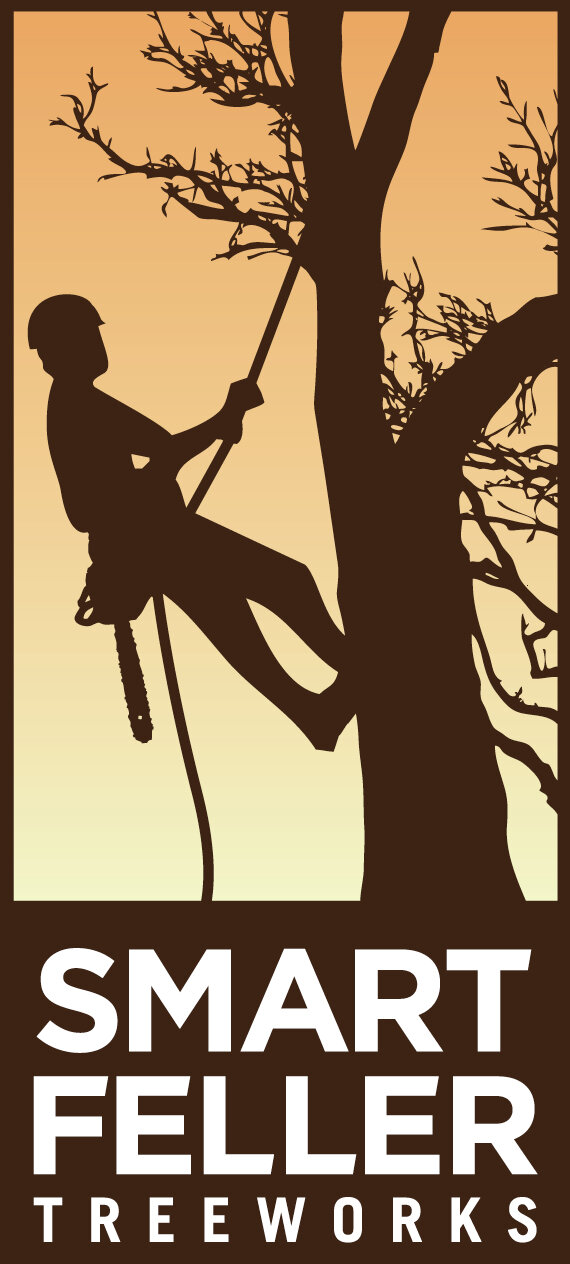Skip the Rake
This is what you want the ground under your trees to look like!
Winter is a time of slowing down, finding warmth with others, and gathering energy, within. For our trees, this crucial process occurs in the soil. Feeder roots pause their wilder, summer-driven search for air and nutrients in the soil and, as the air grows colder, the entire tree root system senses alterations in temperature underground, pausing growth. But things don’t shut down entirely. In our region, alterations in temperature make the winter pause an active one. When cold hits, think of how carefully we leave the house: stopping at the door to consider gloves or a hat, maybe even an extra layer. And when we finally get out in it, the wind, chill, and precipitation affect how we move.
Our trees roots tune themselves to the shift, underground. They rest, when they rest, in a state of alertness. Roots can grow between 32 and 41°F, scientists think. But much is mysterious about how roots overwinter, and remains so without a way to witness, without harm to the tree, underground.
Another way our trees keep active during the winter pause involves fall leaf litter. Leaves left to decompose above a tree’s root system create insulation that many trees need in order for their seeds to sprout. As Peter Wollehben notes in his book The Hidden Lives of Trees, a tree has a higher rate of survivability if it has offspring to feed and nurture in community. Decomposing leaves provide delicious phosphorus and nitrogen, which most types of mulches lack. If the rakes have already been used and the bags have left the curb, there is always next year! Trees are forgiving creatures. Next year, try raking those leaves underneath the drip line of your trees, letting leaves turn back into food for the fungal web your trees all need in order to thrive.
A thick, forest-like layer of leaves keeps the ground warmer in winter and cooler in the summer, leading to a healthier microbiome in a more balanced, regulated environment. A healthier biome means a less compacted soil, which is at the top of an urban tree’s wish list.
Winter is the best time to prune live tissue on trees. Most of the pruning goals for a tree can be achieved by making small diameter cuts of less than 4 inches. If you’ve been worried about that large leader failing or have a branch tickling your roof, winter is the ideal time to give us a call to have a look.
A Tree in Nairobi
So, we were reading about this tremendous, 100-year-old fig tree in Nairobi recently. The tree, surrounded by traffic in the bustling city, was set to be transplanted due to the arrival of a new expressway. (How do you move, successfully, an elder tree like this, four-stories tall?)
Citizens stood up and said no to the transplantation — the tree was spared — but the threat to trees and green spaces remains in Nairobi and all spaces where humans encroach: the struggle will only intensify in our lifetimes, and beyond.
Here in Asheville, our sense of the sacredness of trees comes on strong in the fall, when our treescape turns dusky red, gold, orange and yellow. We celebrate fall foliage; it's our golden season, and our mountain trees draw nearly 11 million visitors a year (pre-pandemic, of course).
How do we preserve our trees and accommodate for human growth? The tree in Nairobi presents the problem in stark relief. It's a difficult question for every citizen, and Smart Feller is not immune to the forces involved. We work within the question every day, on nearly every job we take on. We're a business, but we're also humans dedicated to tree biology and longevity. How can we not be?
Which is why we tell you, our clients, how your trees can be preserved. When the soil can be treated and the microbiome improved. When cabling and bracing can be used to save a tree. When pruning will help (and when it won't). When something can be done to extend tree life, we will tell you. In Kenya, there is a tribe called the Kikuyu. They believe that fig trees house their ancestors. We're always curious: what do you feel for your trees? To what lengths will you go to help them?
So many tree stories, lately, end in tragedy. It was good to read about the great fig in Nairobi, spared from extraction by citizens who spoke out. We were in the process of revising our website, with more details about our ethos and our tree preservation services, when we read about it.
As always, call us with any questions you have about your trees.
Thanks for reading.
Onward into winter,
Smart Feller


